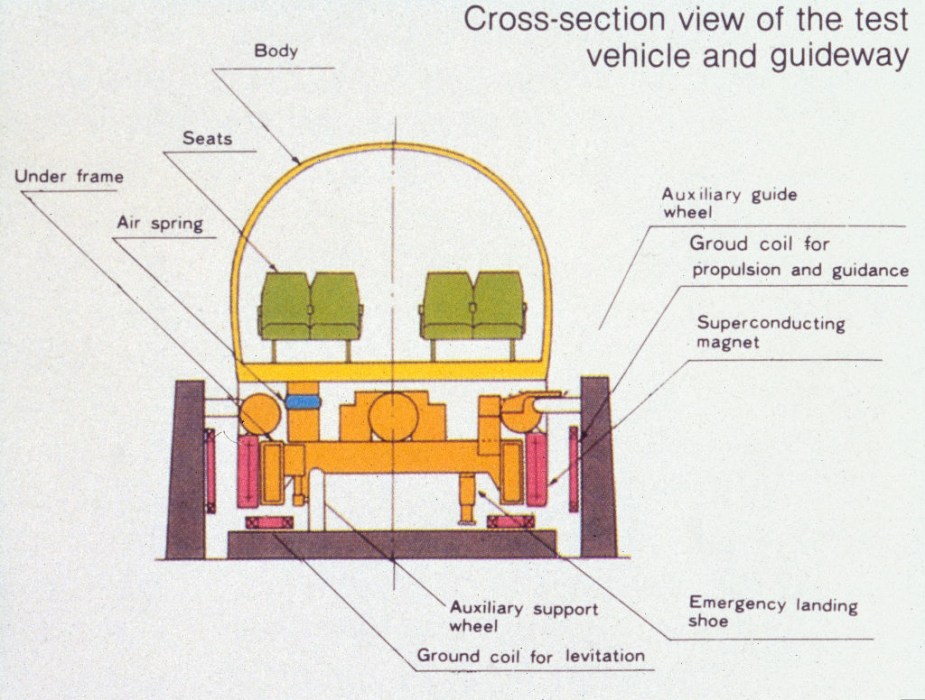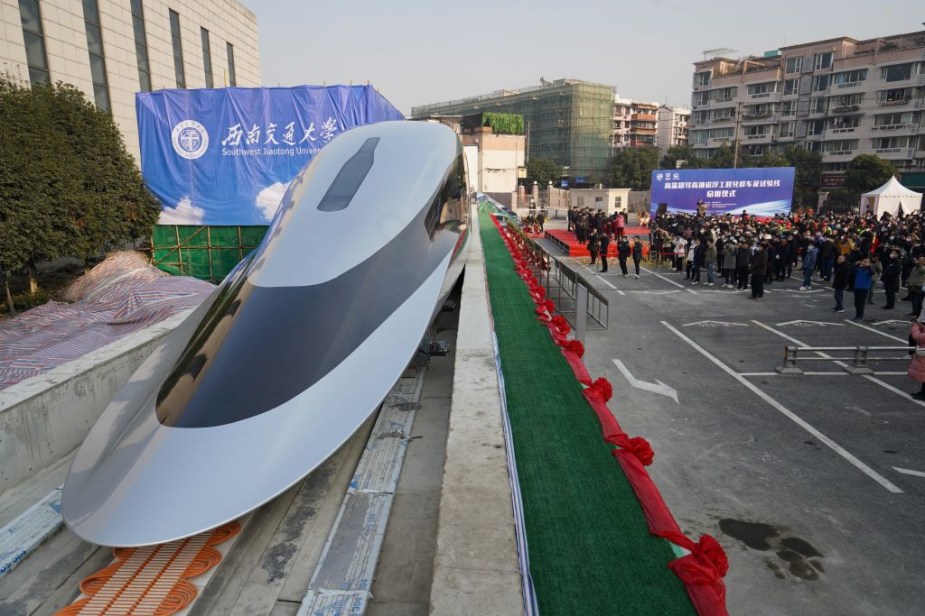
Watch: Modified Cars Floating Traveling On Maglev Track
What if there was no range anxiety with electric cars? Would EVs see more adoption? What if your EV could glide on a surface that suspended it a few inches off the ground similar to a maglev train? In China, floating cars elevated by magnets may already be a reality based on this video.
How far and fast did the maglev EV go?

Chinese state news agency Xinhua, along with Southwest Jiaotong University researchers in Chengdu, Sichuan province, have already done it. Or are at least extremely close. This modified car traveled a few hundred yards an inch and one half above a special conductor surface in tests. What’s more surprising, it reached speeds of 140 mph.
The application is better known as magnetic levitation technology or maglev. Eight different EVs had Magnets on their undercarriages. One of the test vehicles was driven several hundred yards. It was somewhat stable traveling while suspended on the conductor surface. It can be seen porpoising back and forth as it glides on the surface.
Watch for yourself
The video, captured by Chinese journalist QinduoXu shows how EVs, combined with maglev technology, could eliminate the need for an EV to use its powertrain for travel. That, in turn, means no energy consumption while on the maglev surface. And travelers can complete trips in much shorter times.
Maglev systems start with strong electromagnets attached to a train’s suspension. The magnets suspend, guide, and propel the trains all at once. Their magnetic strength can then be altered to create controlled tension for both lift and to create propulsion along a specialized track.
How do maglev systems work?

The front corners of the vehicle have magnets with north poles that face outward. In the rear corners, magnets with south poles face out. A magnetic field controls both pull at the front and push in the rear.
The majority of maglev trains are located in China, Japan, and South Korea. China’s recently released maglev train in Qingdao, Shandong province, reaches speeds of almost 400 mph. That is partially the result of no friction holding back the train because it makes no contact with any surface. It also means a smooth, comfortable ride on essentially a cushion of air.
Maglev trains have been around since the 1980s, after decades of research and development. It’s green, fast, clean, and quiet. And fast. So why aren’t maglev trains in use in the U.S? There are two reasons.
Why don’t we have maglev trains in the U.S?

First, we already have an extensive, established railway system. Cost is the other. Estimates for a U.S.-based maglev system would easily exceed a minimum of $100 million per mile to build. And there are no guarantees it would be profitable within those amounts.
China’s Shanghai line loses well over $100 million a year. Japan’s maglev trains are heavily government-subsidized though privately owned. So those factors, and probably others, means we’re not going to see maglev in the U.S.
Whether those same costs would apply to an interstate system for cars is unknown. But it is interesting to speculate how an alternative means of travel, combined with EVs, could paint a very different picture for personal travel in the not-too-distant future.



